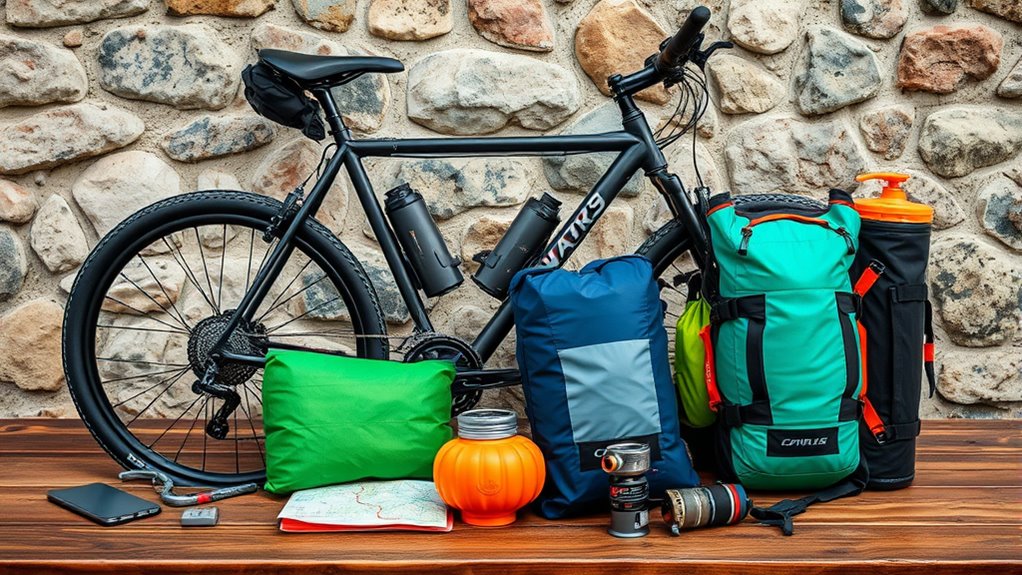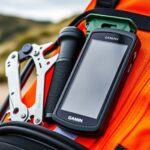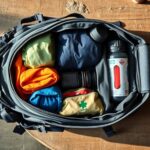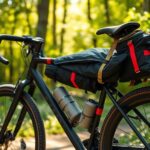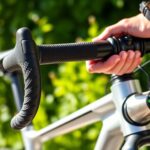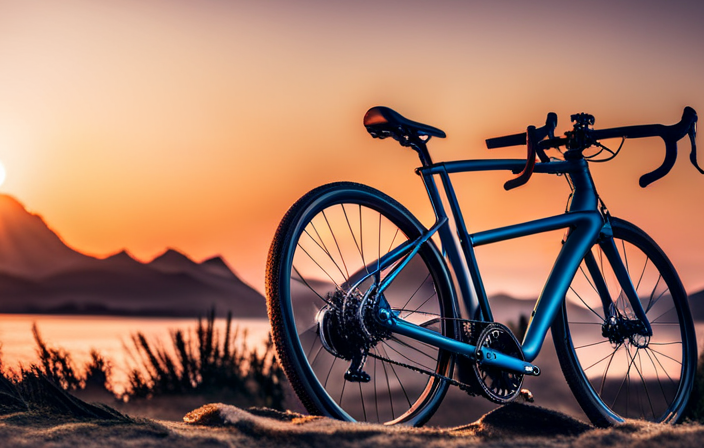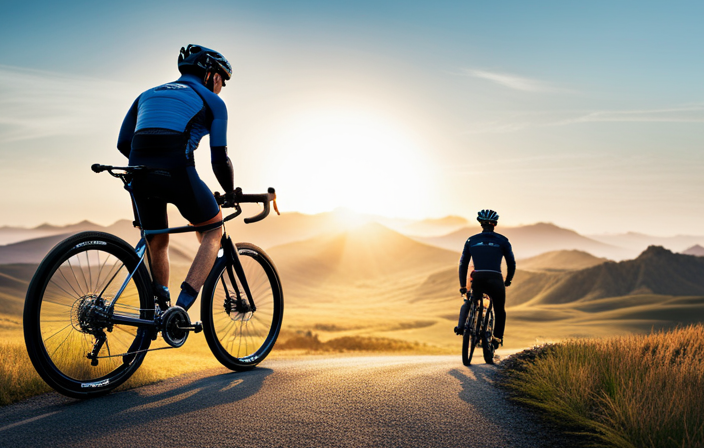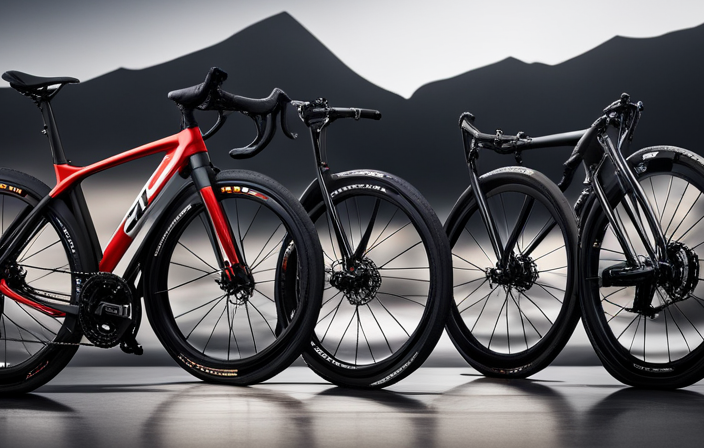When packing for a 3-day bike-packing trip, focus on lightweight, multi-purpose gear and safety essentials. Carry enough water, a hydration system, and navigation tools like maps or GPS devices, ensuring they’re fully charged and easily accessible. Pack repair tools, first aid kit, and high-visibility clothing for safety. Distribute weight evenly and stay prepared for weather changes. For more tips on staying safe and well-prepared, keep exploring how to gear up effectively.
Key Takeaways
- Pack lightweight, multi-purpose clothing suitable for varying weather conditions and quick changes.
- Include essential repair tools, spare tubes, and a portable pump for bike maintenance.
- Carry sufficient hydration supplies, like water bottles or a hydration pack, to stay hydrated.
- Bring safety gear such as a first aid kit, reflective clothing, and proper lighting.
- Prepare navigation tools like maps, GPS, and a fully charged phone with a power bank.
Essential Safety and Navigation Tips
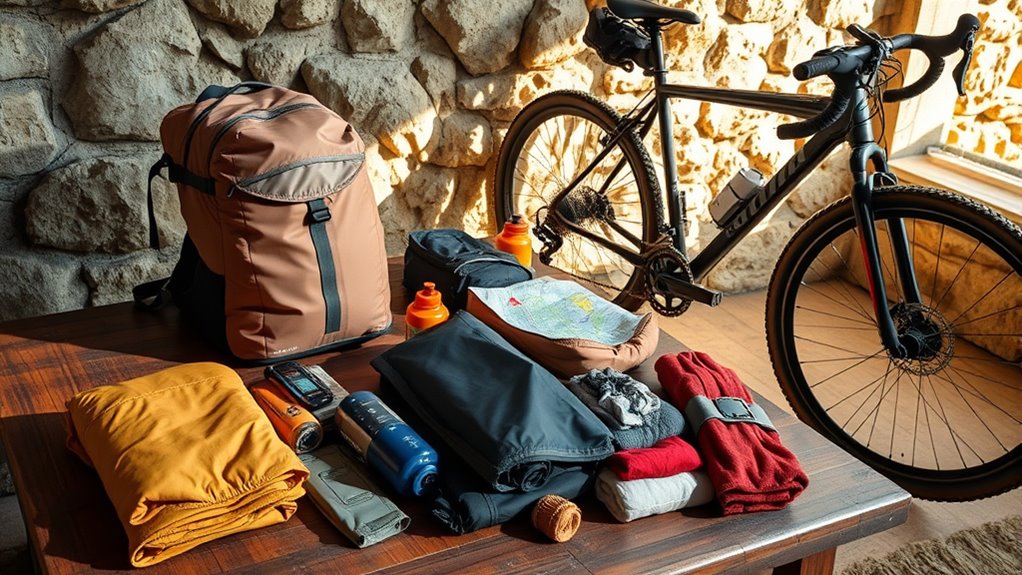
Preparing for a 3-day bike-packing trip requires careful planning to guarantee you have everything you need without overloading your bike. One of the most important aspects of your preparation involves ensuring your bike safety is exceptional. Before hitting the trail, double-check your bike’s brakes, tires, and chain to prevent mechanical issues during your ride. Carry essential repair tools like a multi-tool, spare tubes, and a pump, so you’re ready for flats or minor repairs. Wearing a helmet and high-visibility clothing can boost your safety, especially when riding through traffic or low-light conditions. Make sure your lights work properly, and consider bringing reflective gear to stay visible. Properly maintaining your bike reduces the risk of accidents and keeps you confident on the trail.
Prioritize bike safety with regular checks and essential repair tools for a worry-free adventure.
Trail orientation is equally critical. Familiarize yourself with the route beforehand by studying maps or GPS routes. Download offline maps or carry a physical copy, in case your device loses signal. You should also have a compass and know how to use it, especially if you’re venturing into remote areas where GPS might fail. Mark key landmarks and trail junctions to avoid getting lost. When orienting yourself, pay attention to trail signs and markers, and don’t rely solely on digital devices—sometimes, they can malfunction or drain batteries. To stay on course, keep your phone fully charged and consider bringing a portable power bank. If you’re exploring unfamiliar terrain, riding with a map or GPS device in hand ensures you stay oriented and avoid unnecessary detours. Additionally, understanding the importance of projector contrast ratio can help you appreciate the clarity and detail of your viewing experience, especially in dark environments. Being aware of prophetic dreams can also serve as a reminder that sometimes, intuition and subconscious cues might influence decision-making on challenging parts of your route. Paying attention to battery life management is essential to ensure your devices remain operational throughout your journey. Incorporating a pre-ride safety check routine can further enhance your confidence and preparedness before setting out.
Packing lightweight, essential gear is the next step. Carry a hydration pack or water bottles to stay hydrated throughout your ride. Use compact, multi-purpose tools and clothing to save space. Remember, your bike’s handling depends heavily on how well you distribute weight; keep heavier items low and centered. This improves stability and makes trail orientation easier, especially on technical sections. Safety gear like a first aid kit, sunscreen, and insect repellent should be easily accessible. Planning your route and packing smartly will make your trip safer and more enjoyable, allowing you to focus on the adventure rather than worrying about mishaps or getting lost.
Ultimately, paying close attention to bike safety and trail orientation sets the foundation for a successful bike-packing adventure. With these elements in check, you’ll feel more confident tackling diverse terrains and orienting yourself at tricky trail junctions. Proper preparation not only enhances your safety but also boosts your overall enjoyment, giving you peace of mind to focus on the journey ahead. So, take the time to plan thoroughly, check your gear, and familiarize yourself with the route — your 3-day adventure will be all the more rewarding for it.
Conclusion
Think of your bike trip as a voyage through uncharted waters. With your safety gear as your lighthouse and navigation tools as your compass, you’re steering through the adventure with confidence. Trust in your preparations, like a seasoned sailor trusts their map, and embrace each mile as a new horizon. When you’re well-equipped, every twist and turn becomes part of a grand, unfolding story—yours, written on the open road.
